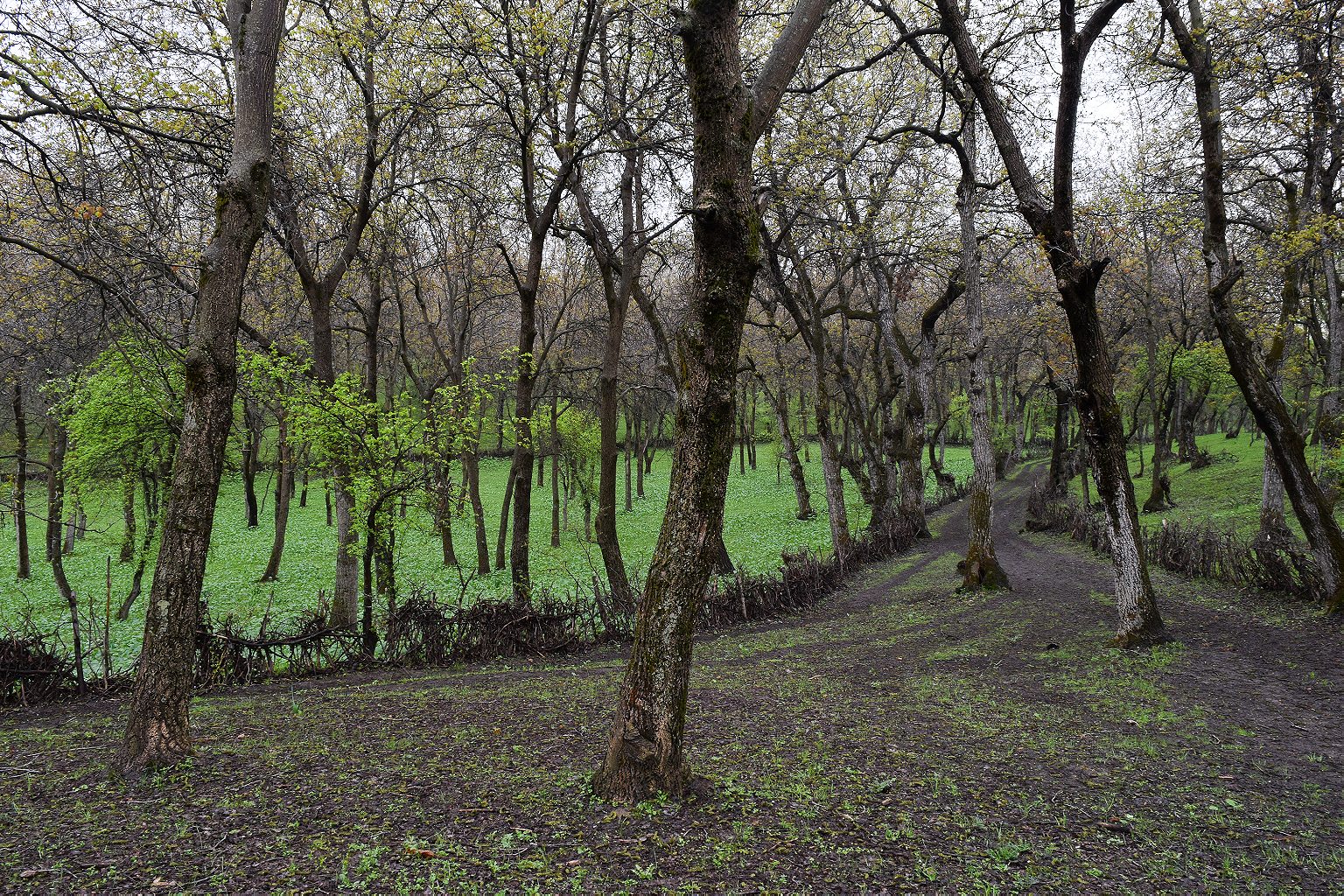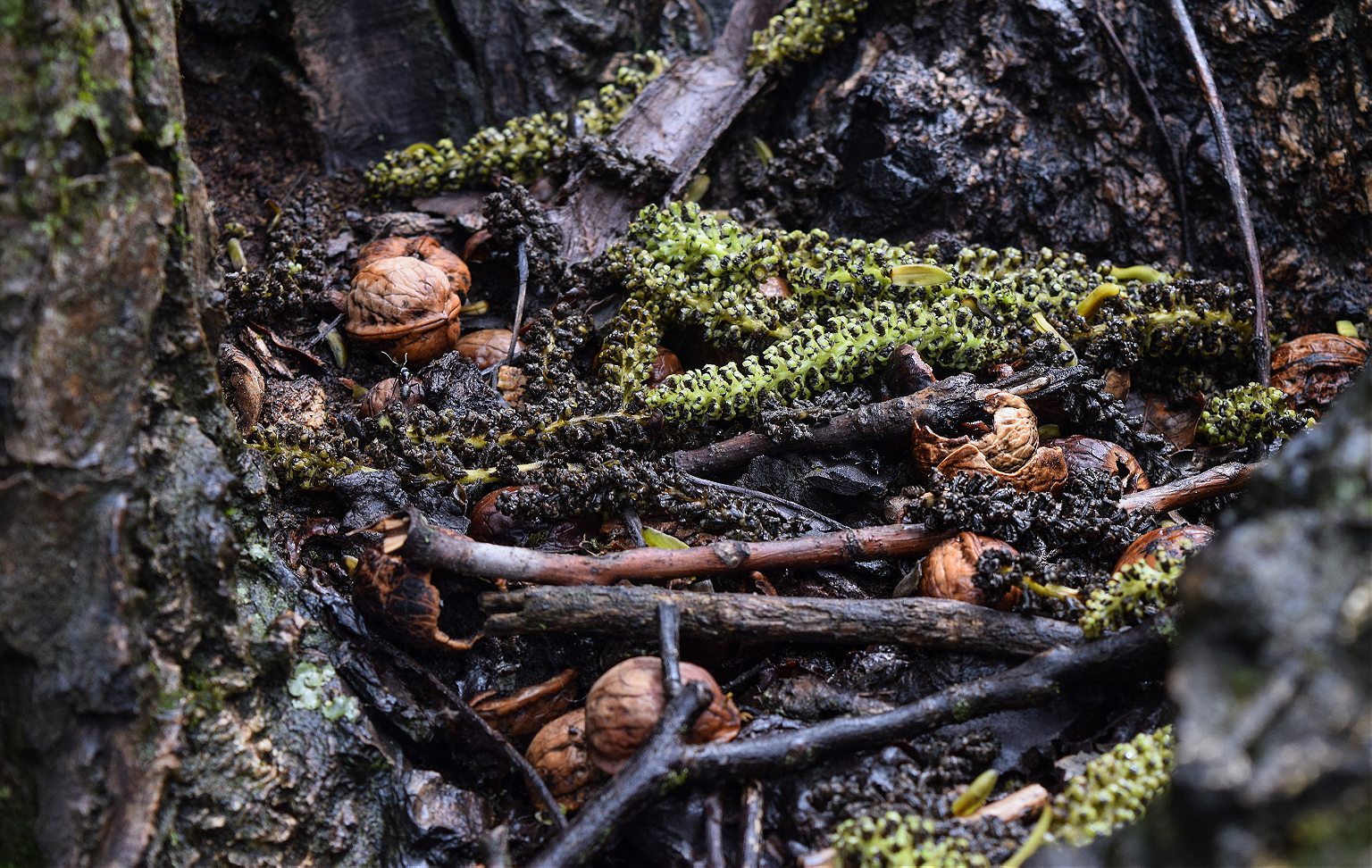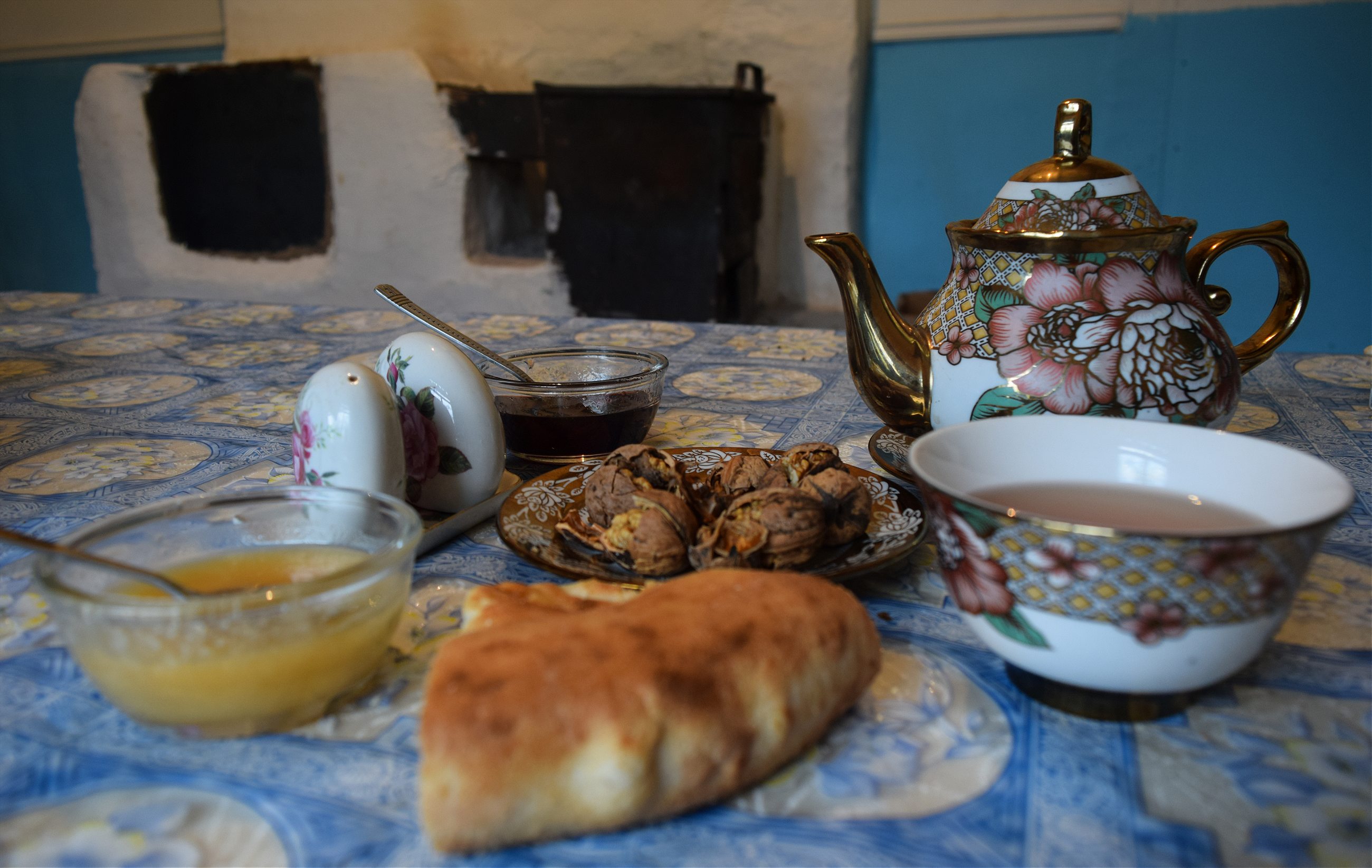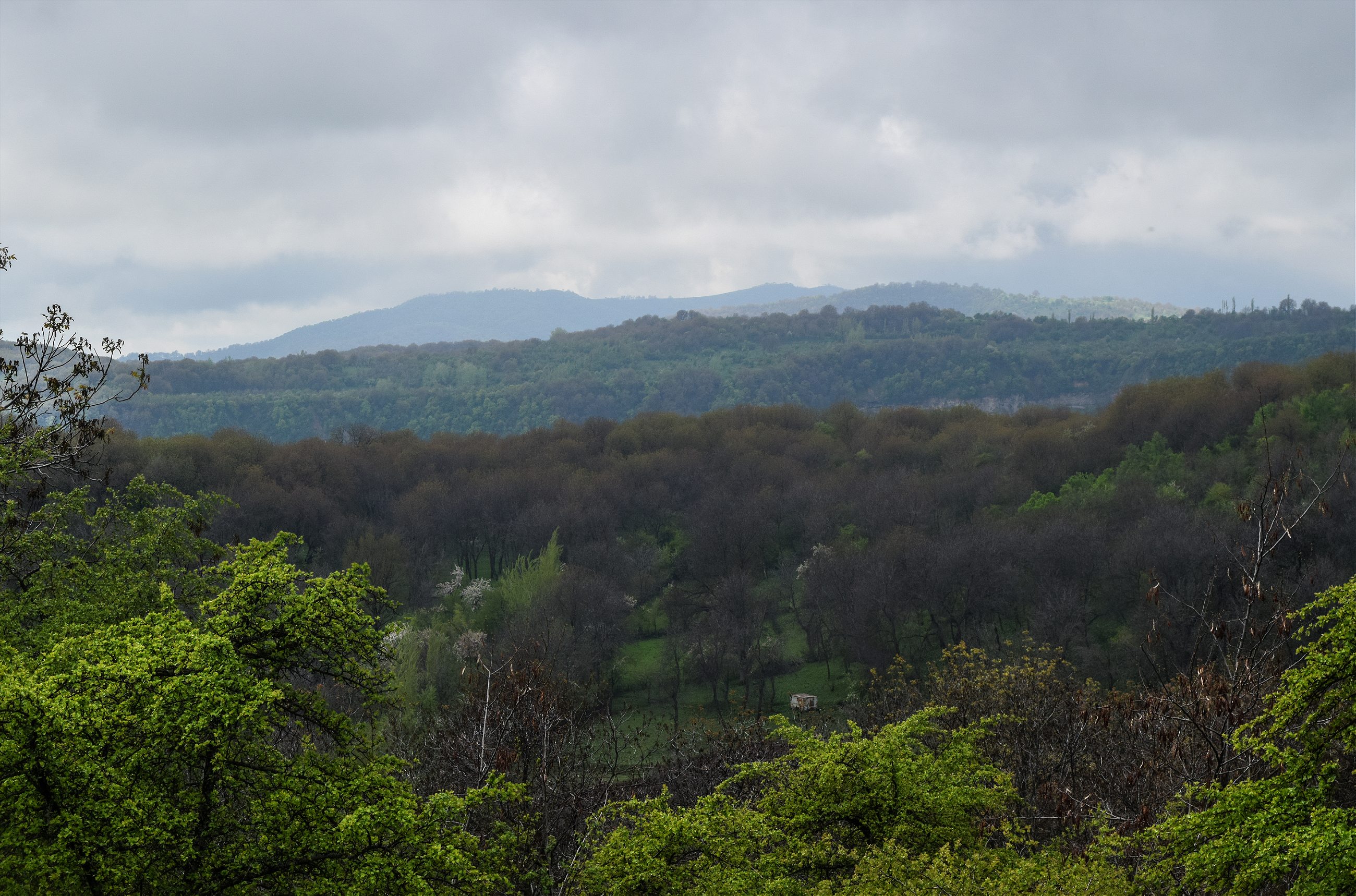It’s in Kyrgyzstan, and it may or may not have something to do with Alexander the Great.
ARSLANBOB, Kyrgyzstan—
Nestled in a lush valley of Kyrgyzstan’s Chatkal mountain range lies the village of Arslanbob, home to both the world’s largest natural walnut forest and a legend, the truth of which is harder to crack than the nut itself.
“This is a secret,” said Roma Tohtarov, a guide with the village’s Community Based Tourism (CBT) organization, before continuing: “During the Soviet times, Red Army soldiers came with saws and cut down a large number of walnut trees and sent them to Rolls-Royce in England to be used to decorate the inside of their cars. Mr. Churchill had seen a piece of wood from here before the war, and asked Stalin for some wood in exchange for weapons.”
Verification of the story proves elusive; the luxury car manufacturer did not reply to questions and the story does not appear in any public records.
But it is an example of the kind of legend that villagers have passed on through the generations about the forest. Such is the central importance that walnut trees play in Arslanbob.
Hugging the 6,500-foot-high slopes in the shadow of the Babash-Ata mountains, the sprawling, ethnically Uzbek village is home to 16,000 people, most of whom have livelihoods that revolve around the annual harvest of the walnuts.

Families spend the long winters extracting the nuts from their soft outer covers and cracking the hard shells. Pretty much everyone, old and young, is involved in the process.
“Full nuts we sell, broken ones are made into oil—we rub it on our skin in winter to keep warm,” explained Tohtarov. “Of course, we also eat them,” he added, “but by the end of autumn everyone has eaten too many and are sick of them.”
Fortunately, there is a wide international market for walnuts not consumed locally. According to the United Nation’s trade statistics database UN Comtrade, 1,200 tons of walnuts were exported by Kyrgyzstan in 2016, worth $2 million.
They come from a forest that spreads east and west of Arslanbob in a confusing network of trails that weave through the dark green of the forest, punctured by patches of grass pasture and blossoming wild apple trees.


As you enter the forest, the smell of wood and coal fires near the village gives way to an earthy richness, as the muddy ebony paths crisscross over and around undulating hills. Tire tracks from Lada Niva cars— the tank-like 4x4s ubiquitous across former Soviet states—mingle with horse and donkey hooves, churning the cloying mud into an even thicker mess, greatly slowing attempts to walk.
Recent nursery-grown walnut trees line up in regimental rows, while the older trees stand alone. In some of the deeper sections, trees are 500 years old, according to Tohtarov. Walnuts from these trees are prized for their superior flavor.
“October 2 is the beginning of the walnut season officially, but in September people start to collect from the trees closest to town, to stop the kids from getting them and trading for ice cream,” he said.
During the harvest season, hordes decamp to the forest, setting up makeshift shelters to allow for easier walnut collection, and the whole event has a carnival feel, with people sharing food and gathering around campfires to sing and share stories.
Story telling is an important part of Arslanbob culture, leading to various explanations over how the walnut trees came to be in the valley.
The village’s economic fortunes now rise and fall on the strength of the walnut harvest
“There are two similar stories involving Alexander the Great, and at least two others saying important Islamic men brought the seeds from paradise to plant here,” Tohtarov explained.
“I don’t believe the Alexander stories, but about the Farsi or Arabic visitor bringing the seeds, yes, it must be true. Someone had to bring the seeds for the trees, as how else did they come here?” he asked as he slipped and slid up the forest track still muddy from the morning’s downpour, occasionally panting for breath, a result, he joked, of spending the winter months eating walnuts and getting fat.
Zahid Ubayidullaev, a former guide who now devotes his time to running one of the homestay options for visitors, explained the Alexander stories over hot black tea and walnuts at the single-story house built by his grandfather.
“When Alexander and his army was crossing the area, some of the soldiers got sick. Alexander sought the help of the local people, who gave them some of the walnuts to eat, and the men all got better. In gratitude Alexander did not attack them, and they accepted him as their king and built the village here,” he said.
“The other version says that after fighting nearby, some of Alexander’s men were injured and couldn’t travel with his army as it continued its journey. So they were left behind in this valley and expected to die. They ate some of the walnuts and recovered and decided to live here, which is why some people have blue eyes and light curly hair,” he said, repeating the somewhat common idea that classically European features sometimes exhibited across Central Asia can be traced back to Alexander’s rovings.

The forest has played an increasingly important role in the village since the fall of the Soviet Union. In the Soviet-era, everyone had a basic income and guaranteed work, with potato farming the primary occupation. Collecting the forest’s bounty was simply an additional source of food and income. But upon independence in 1991, Kyrgyzstan lost the financial support that Russia provided. Lacking the petrochemical resources of fellow -stans Kazakhstan and Turkmenistan, citizens found it increasingly difficult to make ends meet. In Arslanbob, residents quickly looked to the forest to provide their needs.
The village’s economic fortunes now rise and fall on the strength of the walnut harvest. This year, for the second year in a row, residents are concerned that the walnut yield will be disappointing.
On a recent visit, vigorous spring showers had added to the muddy remnants of a late dump of snow that blanketed the valley in up to a foot of snow. Drifts of what at first glance looked like a plague of fat green caterpillars turned out to be a carpet of dead walnut flowers, discarded by the trees after the frosts that accompanied the snow.
The seasonal nature of the harvest has led to efforts to diversify employment options in Arslanbob, primarily in the form of tourism. Efforts to bring in outside visitors to experience the natural beauty of the area have been decades in the making.


Speaking at a 1995 conference in Arslanbob convened to explore ways to preserve the forest, then-forestry minister T.M. Musuraliev waxed lyrical: “The walnut forests of southern Kyrgyzstan represent a great recreational asset for the population. The pure air, with the fragrance of trees and flowers, healthy, clear water, hundreds of picturesque gorges, mountain waterfalls and lakes attract thousands of tourists yearly from other Central Asian countries.”
Visitors have generally been welcomed by the community since.
“The rise in tourism has been broadly accepted by the community. Some of the older and more religious men do not like the tattoos or shorty-shorts on show, but that is about it,” explained Hayat Tarikov, Arslanbob CBT manager and a former forest ranger.
Speaking from his photo-festooned office near the village square, he added: “Its life. We have to change.”
The CBT network has proved an increasingly source of employment in the village, Hayat explained. In 2001 there were seven people working at the Arslanbob CBT. In 2016, that figure had risen to 162, with locals employed as guides, cooks, porters, homestay hosts, and drivers.
In concert with the growing tourism industry has been government-led efforts to protect the forests from overuse and exploitation.
“There is now a tree nursery where new walnut trees are grown and later transplanted to the forest. Cutting the living trees for firewood is banned; instead, the forest rangers identify the dead trees and branches that people can use instead,” said Hayat.

The 1995 conservation conference identified key areas that were threatening the forest, which at some 74,000 acres is a shadow of the former 1.5 million acres that the forest of wild walnut, apple, pistachio, plum, almond, and pear use to cover. Prior to 1917, logging was unchecked. In 1945, the forest received protected status, which limited the felling of trees, but not the damage caused to the forest’s ability to grow and replenish old trees from overgrazing by domestic animals, fuelwood collections, haymaking, and the almost 100 percent collection of fruit and nuts.
High fences of dead branches and barbed wire now partition the forest areas closest to the village. Locals can rent land from the forest ranger, in exchange for a percentage of their harvest.
Tohtarov said outside visitors had begun to influence how people in the region care for the forest, encouraging a culture of not littering during excursions.
“The foreigners don’t do this, they pick it up, use the bins, and they demonstrate by their actions how everyone can look after the environment,” Tohtarov explained, pointing to a CBT-produced sign in English, Russian, and Kyrgyz impelling visitors to respect the environment. This message has been taken to the three local schools in the village in an attempt to end the littering culture that is prevalent among older generations.
“The people here used to be quite isolated, but now they are meeting more people from elsewhere, and reading more information. It is good for the village,” he said.
It is also helping reintegrate the Arslanbob community into Kyrgyz life, after it recoiled following anti-Uzbek violence across the south of the country in 2010.
That year, a vacuum of power in the wake of the country’s second revolution in five years saw violent clashes between the country’s Tajik and ethnic Uzbek populations, resulting in the deaths of at least 200 people—mostly Uzbeks—and causing large numbers briefly fleeing over the border for safety.
“There were no problems in Arslanbob thankfully, but there was a big drop in tourists that year,” Tohtarov said.

Further strengthening the tourism industry and ensuring the health of the forest is the best course of action in safeguarding Arslanbob’s economy and culture, the local guides believe.
“In the future, I know that the forest will be bigger than it is now, with bigger older trees. The roads in town will be asphalted, the road to town will be bigger, and the Internet will be better,” said Tohtarov, explaining his vision for developing the village.
“I hope that a factory or industry will open here to give people jobs, maybe making t-shirts or shoes, and some apartment buildings so that the urban sprawl will stop. I hope that people here will better understand nature and not throw trash everywhere, inshallah.”
For former ranger Tarikov, the preservation of the ancient forest is the key.
“If I had a million dollars, I would make a wall around the forest with checkpoints, great rangers with good salaries, and really encourage the wildlife to return,” he said.
“Do you have a million dollars?” he asked, somewhat hopefully.